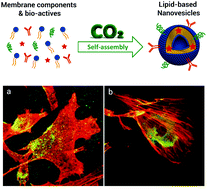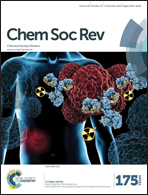Lipid-based nanovesicles for nanomedicine
Abstract
Molecular self-assembly has enabled the fabrication of biologically inspired, advanced nanostructures as lipid-based nanovesicles (L-NVs). The oldest L-NVs, liposomes, have been widely proposed as potential candidates for drug delivery, diagnostic and/or theranostic applications and some liposome-based drug products have already stepped from the lab-bench to the market. This success is attributed to their ability to encapsulate both hydrophobic and/or hydrophilic molecules, efficiently carry and protect them within the body and finally deliver them at the target site. These positive features are also coupled with high biocompatibility. However, liposomes still present some unsolved drawbacks, such as poor colloidal stability, short shelf-life, restricted and expensive conditions of preparation because of the inherent nature of their fundamental constituents (phospholipids). The new tools available in the self-assembly of controlled molecules have significantly advanced the field of L-NV design and synthesis, and non-liposomal L-NVs have been recently developed; this new generation of nanovesicles can represent a paradigm shift in nanomedicine: they may complement liposomes, showing their advantages and overcoming most of their drawbacks. Clearly, being still young, their rocky way to the clinic first and then to the market has just started and it is still long, but they have all the potentialities to reach their objective target. The purpose of this review is to first present the large plethora of L-NVs available, focusing on this new generation of non-liposomal L-NVs and showing their similarities and differences with respect to their ancestors (liposomes). Since the overspread of a nanomaterial to the market is also strongly dependent on the availability of technological-scale preparation methods, we will also extensively review the current approaches exploited for L-NV production. The most cutting-edge approaches based on compressed fluid (CF) technologies will be highlighted here since they show the potential to represent a game-change in the production of L-NVs, favouring their step from the bench to the market. Finally, we will briefly discuss L-NV applications in nanomedicine, looking also for their future perspectives.



 Please wait while we load your content...
Please wait while we load your content...